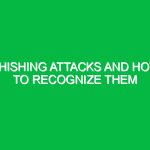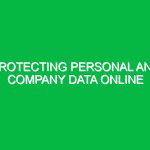In today’s digital landscape, social media has become an integral part of professional life, even within specialized fields like Health, Safety, and Environment (HSE). The safe use of social media for professionals in HSE is not just a matter of etiquette; it’s a necessity. Whether you are sharing insights on workplace safety or discussing regulatory updates, the way you engage on these platforms can significantly impact your professional reputation and the safety of your workplace. This article explores the nuances of using social media safely in the HSE domain, including potential risks, best practices, and relevant regulations.
Understanding the Safe Use of Social Media for Professionals
Social media allows professionals to connect, share information, and engage with peers and the public. However, the safe use of social media for professionals goes beyond just posting updates. It encompasses understanding the implications of what you share, how you share it, and with whom. In the HSE sector, this includes maintaining confidentiality, ensuring compliance with regulations, and upholding the integrity of your organization.
Why is Safe Use of Social Media Important in HSE?
The HSE field often deals with sensitive information, including accident reports, safety protocols, and regulatory compliance. A single post can lead to misunderstandings, misinformation, or even legal repercussions. For instance, sharing a photo from a safety training session without proper context could misrepresent the training’s intent or effectiveness. Therefore, understanding the safe use of social media for professionals is critical to protecting both personal and organizational interests.
Potential Hazards and Risks Associated with Social Media Use in HSE
While social media can enhance communication and information sharing, it also poses several risks, particularly in the HSE domain. Below are some of the most pressing hazards associated with its use:
1. Breach of Confidentiality
One of the most significant risks in the HSE sector is the potential breach of confidentiality. Sharing sensitive information, such as internal reports or client data, can result in legal issues and damage to professional credibility. This risk is particularly acute in industries regulated by strict confidentiality standards.
2. Miscommunication and Misinformation
Social media platforms often encourage quick sharing of information. However, this speed can lead to miscommunication or the spread of misinformation. For example, a hastily posted message about a safety incident may lack crucial details, leading to confusion among employees or stakeholders.
3. Reputational Damage
Inappropriate posts can lead to reputational damage for both individuals and organizations. A professional in the HSE field must maintain a level of professionalism, as any slip can have far-reaching consequences. A casual post that seems harmless might be interpreted as unprofessional or irresponsible, especially in a safety-conscious environment.
4. Legal Implications
Many industries have legal frameworks governing the sharing of information. Violating these can result in legal actions against individuals or organizations. For instance, sharing proprietary safety protocols without permission could lead to intellectual property disputes.
5. Cybersecurity Threats
Social media accounts can be targeted for data breaches. Cybercriminals may exploit vulnerabilities to access sensitive information. For professionals in HSE, this can be particularly dangerous, as it may expose confidential safety data or regulatory compliance documents.
Best Practices and Safety Precautions for Social Media Use in HSE
To mitigate the risks associated with social media use, here are several best practices and safety precautions that professionals in the HSE domain should consider:
1. Establish Clear Guidelines
Organizations should create clear social media policies tailored to their specific needs. These guidelines should outline acceptable behaviors, the types of information that can be shared, and the consequences for violations. For instance, a construction company might prohibit posting images from job sites without prior approval.
2. Think Before You Post
Before posting anything, consider the potential implications of your message. Ask yourself: Is this information confidential? Could it be misinterpreted? Would I be comfortable if this post were shared publicly? Taking a moment to reflect can prevent many issues from arising.
3. Use Privacy Settings Wisely
Familiarize yourself with the privacy settings of the platforms you use. Adjusting these settings can help you control who sees your posts. For professionals, it may be wise to limit public visibility to protect personal and organizational information.
4. Separate Personal and Professional Accounts
Maintaining separate accounts for personal and professional use can help limit exposure to risks. Consider using professional accounts solely for work-related content. This separation can help prevent personal opinions or posts from affecting your professional reputation.
5. Engage with Caution
When engaging with others, especially on contentious issues, proceed with caution. Avoid heated debates that could escalate. Instead, focus on constructive discussions that align with your professional expertise.
6. Stay Informed About Regulations
Understanding relevant laws and regulations is crucial for safe social media use. Familiarize yourself with any industry-specific guidelines regarding information sharing and confidentiality. For instance, professionals in the healthcare sector must comply with HIPAA regulations to protect patient information.
Regulations and Standards Governing Social Media Use in HSE
While social media itself is not heavily regulated, various laws and standards impact how professionals in the HSE sector should use it. Here are a few key regulations to consider:
1. Health Insurance Portability and Accountability Act (HIPAA)
For professionals in healthcare, HIPAA mandates strict guidelines on sharing patient information. Any social media engagement that inadvertently discloses patient details could lead to severe penalties.
2. Occupational Safety and Health Administration (OSHA) Standards
OSHA encourages transparency in safety practices. However, sharing specific safety protocols or incident reports without permission may violate company policy. Understanding OSHA‘s stance can inform how you communicate safety information online.
3. Data Protection Regulations
Various data protection laws, such as the General Data Protection Regulation (GDPR) in Europe, govern how personal data can be shared and processed. Professionals should be aware of these regulations to ensure compliance when engaging on social media.
Conclusion
The safe use of social media for professionals in the Health, Safety, and Environment domain is essential for protecting personal and organizational integrity. By understanding the potential risks and implementing best practices, HSE professionals can navigate social media effectively. Remember, every post carries weight; thus, it’s crucial to approach social media with caution, mindfulness, and a commitment to professionalism. As you engage with peers and the community, let your online presence reflect the values of safety and responsibility inherent in your work.


